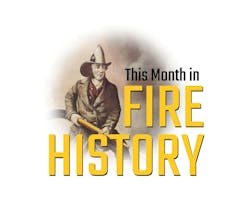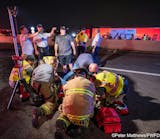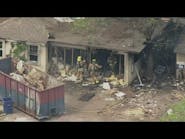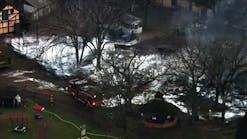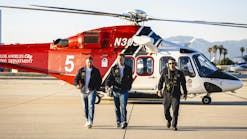March is an exciting time for many people. Daylight Savings Time, St. Patrick's Day, March Madness, the return of Major League Baseball and the first day of Spring all happen. But, sadly, March has also seen some of the worst tragedies in the history of the U.S. Fire Service. Here is a look back at some of them.
March 10, 1941, Brockton, MA—The Strand Theatre Fire
In the early morning hours of March 10, 1941, night custodian Christopher Moore discovered a fire in the basement below the candy counter of the Strand Theatre in Brockton, MA. What seemed like a small, rather routine fire call, turned into one of the deadliest fires in the history of the U.S. fire service.
In all, 13 firefighters were killed, and more than 20 injured when what was termed a routine fire turned into a disaster.
The small fire in the basement made its way up the south and west walls of the building. Firefighters were inside the building trying to extinguish the flames when the fire suddenly shot through the roof and outside a corner wall. As firefighters stood on the balcony using hoses to fight the fire inside the walls and ceiling, the steel roof trusses unexpectedly buckled, leading to parts of the roof collapsing.
The Strand fire took the lives of Capt. John F. Carroll, Lt. Raymond A. Mitchell and firefighters George A. Collins, Bartholomew Herlihy, Frederick F. Kelley, Martin Lipper, Matthew E. McGeary, Roy A. McKeraghan, John M. McNeil, Denis P. Murphy, William J. Murphy, Daniel C. O'Brien and Henry E. Sullivan.
Despite thorough investigations and considerations of all evidence, no specific accidental or incendiary cause was identified for the fire.
In remembrance of the fallen firefighters, Brockton holds an annual ceremony on March 10, where firefighters from across the region gather to honor their 13 brothers who lost their lives. A statue was unveiled in 2008 in honor of those who died.
March 18, 1996, Chesapeake, VA—Advanced Auto Parts Fire
On March 18, 1996, South Hampton Roads firefighters Frank E. Young and Jesse Hudgins were killed when falling debris trapped them inside the burning Advanced Auto Parts in Chesapeake, VA.
A power company employee set up a service truck at the rear of the Indian River Shopping Center to disconnect electrical power to a customer who had not paid their bill. During this process, the worker elevated the articulating boom on his truck to roof level, which led to an electrical flash near the store and subsequently caused the fire to break out.
The materials used in the building's construction and the flammable contents of the auto parts store, such as motor oil and other fluids, contributed to the rapid progression of the fire.
This incident marked the first fire-related deaths among South Hampton Roads firefighters since 1992 and the first in Chesapeake in over 20 years.
March 22, 2018, York, PA—Piano Warehouse Collapse
A fire started on March 21, 2018, at the former Weaver Organ & Piano factory in York, PA. Despite the efforts of more than 100 firefighters who battled the fire, it was challenging to pinpoint the exact origin of the fire due to thick gray smoke pouring out of the building when firefighters arrived. A snowstorm on that day added to the challenges of the firefighting efforts.
Ivan Flanscha, 50, and Zachary Anthony, 29, were part of a crew dousing hot spots the next afternoon when a wall collapsed killing both firefighters.
The collapse of the multi-story building trapped several other firefighters, and the regional technical rescue team was called to help rescue the them.
As Firehouse.com reported, "This is the worst day in my career, this is the worst day for the York City Fire Department," Fire Chief David Michaels told the York Dispatch. "We are totally overwhelmed. We have received tons of support."
Real estate developer Matt Steinkamp and his wife were planning to convert the old piano factory into a modern apartment complex with 42 units at the time of the fire.
Two years later, the estates of the firefighters filed a wrongful death lawsuit against the building owners.
In his Chief Concerns column for Firehouse magazine, Chief Marc Bashoor examined the ripple effects of this fire and the apparatus crash in Kanawha County, WV, just two days later that is our next tragedy to revisit.
March 24, 2018, Kanawha County, WV—Apparatus Crash
Two Pratt, WV, Volunteer Fire Department firefighters tragically lost their lives when their truck crashed while responding to an accident.
The crash was caused by a tragic sequence of events. A vehicle traveling the wrong way on the interstate wrecked, resulting in a triple fatality accident.
The Pratt fire truck ran off Paint Creek Road into a ditch and hit a rock wall on the way to the wreck scene on the West Virginia Turnpike, killing Assistant Chief Michael Edwards and Lt. Thomas Craigo. Three other firefighters were injured in the crash.
March 25, 1911, New York City—Triangle Shirtwaist Building Fire
On March 25, 1911, a discarded cigarette that ignited a scrap fabric bin started one of the worst tragedies New York City had ever seen. As Paul Hashagen reported in his “Learning from Tragedy” article, “That afternoon, on the eighth, ninth and 10th floors of the 10-story Asch Building at 23–29 Washington Place (also known as 245 Greene St.), 575 workers were finishing a seven-hour overtime shift at the Triangle Shirtwaist Co. It was about 10 minutes before the 4:45 closing bell when a carelessly discarded match or cigarette ignited a huge pile of scraps beneath a cutting table on the eighth floor. The table itself, also piled high with combustible fabric, was soon burning briskly. Tissue-paper sewing patterns suspended from clotheslines above the tables burst into flames, spreading the fire across the room.”
The factory’s hazardous environment, with flammable materials stored on production floors and overcrowded workspaces, fueled the rapid spread of fire. Various factors, including locked doors, inadequate fire escapes, a lack of a sprinkler system and rapidly spreading flames trapped the workers, who were mostly immigrant women and girls.
When firefighters arrived, they found that their ladders were too short to reach the upper floors. The overloaded fire escape soon collapsed. Many workers, unable to escape the inferno, jumped to their deaths. In all, 146 workers lost their lives that day.
Outrage from garment worker’s unions and the general public led to significant workers’ rights and safety reforms. The incident spurred the introduction of more than 30 new laws to regulate workplace safety and improve labor conditions, including provisions for fire alarms, sprinklers and stricter labor regulations enforcement by the Department of Labor.
As Daniel Byrne reported in his article, “After 100 Years: Lessons Learned from Triangle Shirtwaist” article, “As before there were major advancements in the aftermath of this fire. Not only major labor law reforms and the advancement of Woman's Suffrage, but the seeds of the life safety code were planted; and for the first time in building history, we not only looked at the construction of the building as it related to fire safety, but now what we put inside those buildings. Codes written in blood went into the book.”
March 25, 1990, Bronx, NY—Happy Land Social Club Fire
Exactly 79 years later to the day, after the Triangle Shirtwaist fire, another tragedy struck New York, Unlike the accidental cause of the Shirtwaist fire, the Happy Land Social Club blaze was pure arson.
Julio Gonzalez, who had been thrown out of the club earlier in the evening following a dispute with his ex-girlfriend who worked at the club, purchased gasoline from a nearby gas station. He returned to the club and proceeded to pour gasoline on the staircase leading to the only available exit. He then lit the gas on fire, leading to the tragic deaths of 87 people, most of whom were young Hondurans celebrating Carnival at the club.
Gonzalez was convicted for his actions and sentenced to multiple counts of 25 years to life in prison. He passed away in 2016 while serving his sentence.
